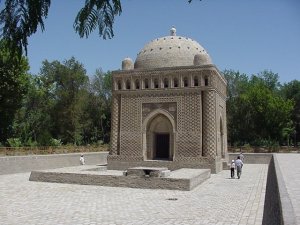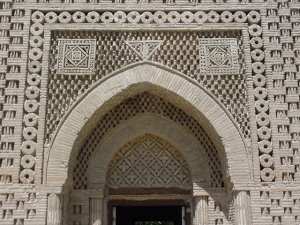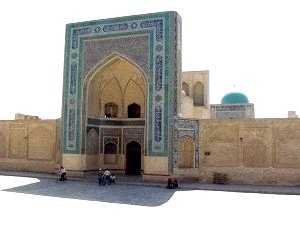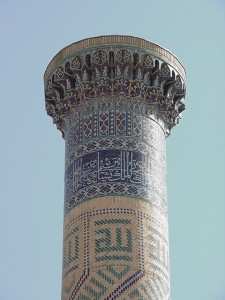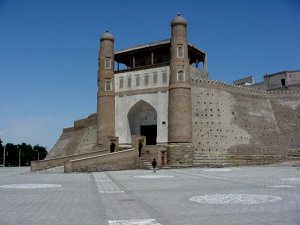|
|
Wylie and Helene Uzbekistan |
|
The Silk Road
Some of the buildings in Bukara and Samarkand date from the 700s. Traces of older Buddhist and Zorastrian motifs and architecture can be seen on some.
La plupart des edificea sw Bukara et Samarkand datent du 8eme siecle. On peut retrouver des motifs buddistes et meme Zorastrians sur certains monuments. La religion Zorastrienne constitue la plus ancienne religion monotheiste qu’on connaisse. C’est donc une religion pre-chretienne.
Many others were built from the 12th to the 16th century. Most of these are on the sites of even older buildings that predate Christ.
Plusieurs autres edifices datent du 12eme-16eme siecle. Ces derniers ont souvent ete construits a l'emplacement d'autres monument predatant la venue du Christ.
These impressive structures are due to Uzbekistan’s importance as the major route on the Silk Road. Spices, silk, furs, metals and porcelain were moved along this ancient trading route.
La presence de plusieurs routes de la soie sur le territoire d’Uzbekistan, explique la presence de nombreux edifices historiques.
To the west it stretched through Iran to the Mediterranean Sea and the Roman Empire. To the east the route passes over the Tian Shan mountains to Kashgar and onward into central China.
On y transportait epices, fourrures, soie, porcelaine et metaux precieux de la mer Mediteraneenne jusqu’en Chine centrale.
Local governments profited by taxing the goods, so they worked together to keep the routes open and free of bandits. As a result the cities along these routes were religiously tolerant and very cosmopolitan.
Les gouvernements locaux faisaient bonnes affaires en taxant tous ces beaux produits. Ils avaient donc avantage a garder leurs routes bien secures et sans bandits afin d’y encourager le commerce. En consequence, des villes cosmopolitaines s’y sont developpees.
| |||||||||||||||||||||
